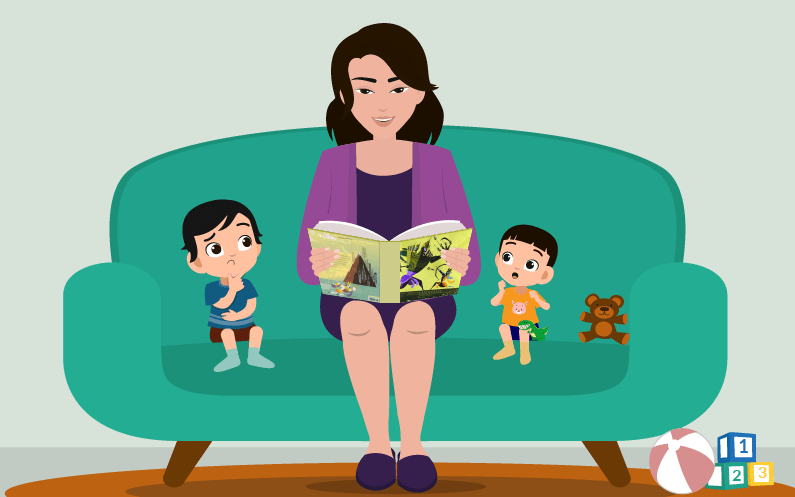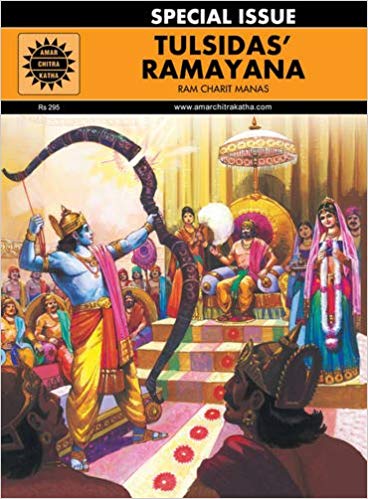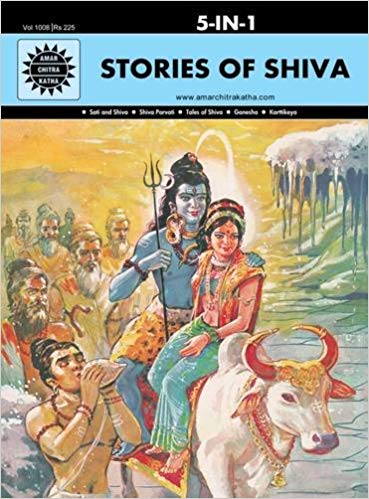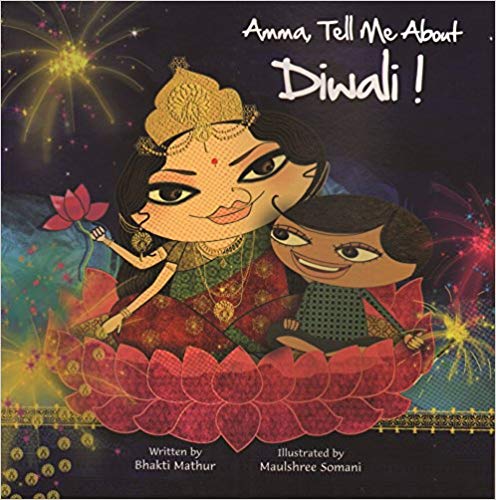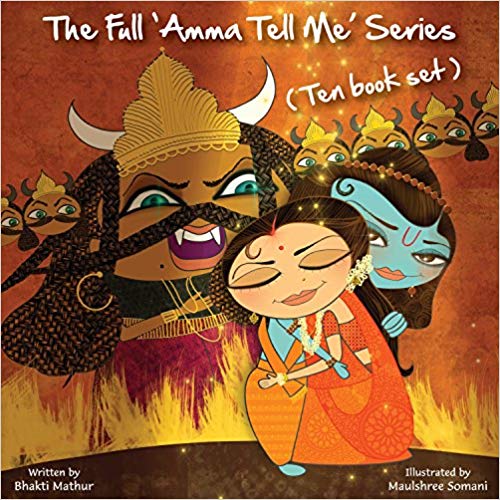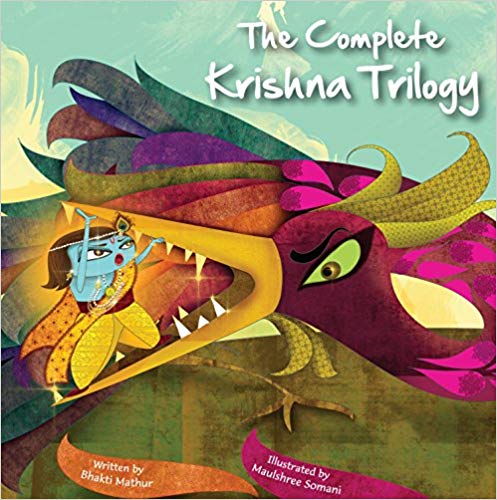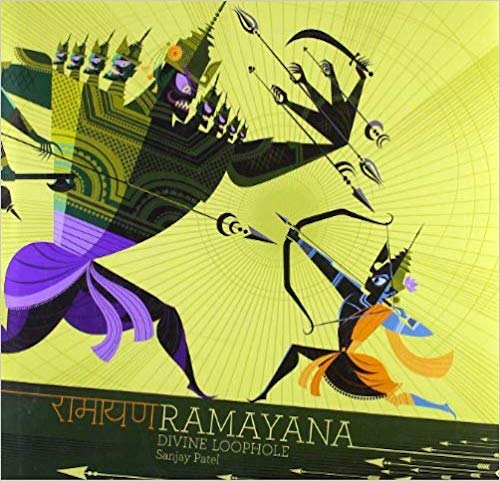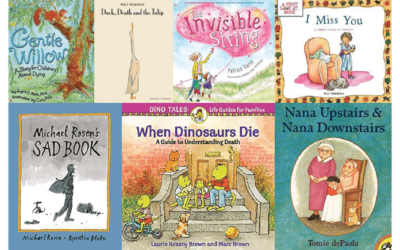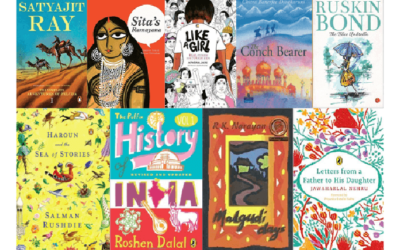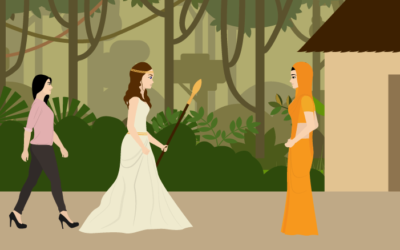Column
How I Teach Mythology To My Children
At the onset of the festive season, I am once again reminded of my childhood in India, where every festival is celebrated with much fervour. Although, my eight and five-year-old boys aren’t in India, I try my best to encapsulate the joy and enthusiasm of the festivities here in Seattle.
We usually start with reading and talking about the stories behind the celebration. This is then followed by some research (and a furious jog down memory lane on my part) to come up with appropriate décor and culinary samples. We proudly don our Indian attire, and it all adds up to make it a rather special day!
In trying to remember the fascinating stories behind festivals, I sought out books on mythology. In the process, I stumbled upon three children’s books on Hindu mythology that offer different perspectives, making them an intriguing trio:
- The Amar Chitra Katha series
- Amma Tell Me series by Bhakti Mathur
- Mythology books by Sanjay Patel
Amar Chitra Katha Series
For over four decades, the vivid Amar Chitra Katha (ACK) series has been an undisputed reference source for both parents and children when it comes to reading about Indian mythology. More recently, I have seen friends and family turn to these ubiquitous comics when introducing their children to prominent national figures like Mahatma Gandhi, Jhansi Ki Rani, and even JRD Tata!
ACK needs no introduction. It’s detailed, visual powerfully disseminates information to its readers. We have enjoyed learning about the ten Avatars of Vishnu (Dasha Avatara), and complexities of great Hindu epics like The Ramayana and The Mahabharata. We also learned about comparatively lesser known stories like those of the sons of Shiva. At the peril of showing my ignorance, I had no idea Shiva had three sons!
Our ACK journey has been areligious and purely driven by curiosity. As an example, it has been a fun memory challenge to learn tongue-twisting names of characters (“Hiranyagarbha”). While it has been cool learning about the complexities of the various mythological tales, it has been even more rewarding learning about simple life lessons like the importance of karma and good deeds and reminding ourselves of the victory of good over evil.
ACK has also forced some nuanced and deeply analytical conversations around the notion of ethics, morality and justice. It’s no secret that Hindu mythology is fraught with numerous paradoxes and shades of grey. For instance, was Dronacharaya’s treatment of Eklavya ethical? The Guru’s favouritism towards Arjuna and his unreasonable demand of Eklavya’s thumb as gurdakshina is still hotly debated by my boys. Likewise, was it right for Kunti to birth Karana out of wedlock and then discard him due to societal pressures?
In a nutshell, ACK books have done a wonderful job in providing us all the facts and facets of the subject matter. Being published in a comic format, the books are highly visual and have managed to rev my children’s imagination, thereby making them more interested in reading. The one thing that could perhaps be better addressed is the depiction of asuras who are typically grey or black as opposed to the ‘good guys’ and princesses / queens who are strikingly depicted with pinkish-whitish skin. While this may be a non-issue for some, it was noticed by my boys.
Amma Tell Me Series
Another more modern series that I chanced upon was the Amma Tell Me series. This is a good option, if the ACK books seem too graphic and detail-oriented, especially for young ones. As the name suggests, it’s a collection of mythological stories narrated by a mother to her two sons (Kalaka and Kiki) and their dog Frodo. Given this setting, it’s more contemporary and relatable to children and adults alike. Personally, since it’s a mom talking to her two sons, it certainly resonates with me!
Putting biases aside, like ACK, this series is also highly visual. It is beautifully illustrated, and the stories offer a fair amount of detail. However, it’s not a comic, so it’s less busy and more digestible, so to speak. The illustrations are also less true to life and more like human cartoons. For us, this visual handling made mythology less scary. Let’s face it. Hindu mythology is a bit daunting given all the asuras, rakshasa, weapons and bloodshed it has as salient elements. As a result, this series of books certainly ‘softened the blow’ for my prekindergartner and second grader, while still providing all the necessary information.
So far, thanks to the Amma Tell Me books, we have enjoyed reading about Krishna (his birth, his relationship with his uncle, Kansa; his heroic deeds in Vrindavan, etc.), Diwali and Holi. We also appreciate that these books weave in the ‘how to celebrate’ aspect of Indian festivals within the mythological narrative, so families get a sense for the how and why behind a celebration. For instance, why do we light diyas on Diwali? This further differentiates these books from the ACK stories.
Relative to the ACK series, the Amma Tell Me series has a limited number of stories. The series addresses aspects of Krishna’s, Hanuman’s and Durga’s life, includes a book on the Ramayana, and has some books on a few Indian festivals like Holi, Diwali and Raksha Bandhan. That being said, these books were certainly a great precursor for us to get started with Indian mythology before diving into more detailed ones like the ACK series.
Mythology Books By Sanjay Patel
Viewing Hindu mythology through the lens of a Pixar animator has been an interesting journey for us. We were introduced to Sanjay Patel’s witty narrative, incisive and flamboyant mythological depictions through Ganesha’s Sweet Tooth, Ramayana: The Divine Loophole and The Little Book Of Hindu Deities.
Having experienced a few children’s mythology books, we found that Patel’s books fall somewhere between the Amma Tell Me series and the ACK books spectrum. They have all (or most) of the complex details that Hindu mythology demands, yet each of his stories has a twist to them. For example:
- Ganesha’s Sweet Tooth isn’t just about the shenanigans of a mischievous baby Ganesha. It’s a goofy story about Ganesha losing his tusk (by biting into a hard jaw-breaking sweet), meeting Vyasa in the woods and eventually becoming his scribe as Vyasa narrates the story of the Mahabharata. That was a nice little surprise for us!
- Ramayana: The Divine Loophole doesn’t just present the events that begin with Ravana’s misdemeanors, the re-birth of Vishnu as Ram, his exile, Sita’s kidnapping and Ravana’s eventual demise. There are a number of life lessons weaved in that sparked interesting conversations for us. For example:
- It has allusions to karma (Marich, who’s Ravana’s uncle helps him kidnap Sita because Ram had vanquished his mother, Tataka). This led to an animated discussion around good Karmic actions in everyday life, like sharing, in everyday life.
- It talks about the importance of showing respect to others (even though Ram and Ravana faced off at the battlefield, Ram folded his hands in respect and bowed before Ravana prior to commencing the battle).
- Starkly seen in The Little Book Of Hindu Deities, as notable in his other two books too, Patel’s illustrations are captivating. My boys simply enjoyed looking at his quirky illustrations that accurately portray the characteristics (and idiosyncrasies) of Hindu Gods and Goddesses (Think: Durga, perched on a tiger with different weapons in each of her six hands), making them stick in little minds. His description of each deity is succinct, easy to understand, short and filled with interesting trivia (“Why is Durga dark? What does Hare Krishna mean?”). Simply put, Patel’s books are a “non-threatening” visually delightful introduction to the intricacies of Hindu mythology!
Today, parents and caregivers have a variety of literary options to turn to when wanting to educate their children (or themselves) about the ins and outs of Hindu mythology. From diverse writing styles to varied illustrations and formats, there is a wide choice to pick from. This is a welcome change that keeps the complex nature of Hindu mythology fresh through a selection of narrative perspectives and visual handling that span from relatively simple and light-hearted to highly granular. Having read each of the aforementioned books, I can certainly vouch for the fact that each presents a unique style that captivates young minds and entices adults as well.

Nidhi is an avid traveller and reader. A sushi and yoga lover. Her 'pre-kids' life was spent in the ever-dynamic field of Communication Sciences. After which, she chose to be a fulltime mom. Reading and playing with her two high energy boys has been a fascinating journey. They have (re)kindled in her a sense of wonder in all things small. Children’s literature has been an inspiring new discovery for her. She’s constantly seeing the world through little eyes, applying simple learnings to deepen life’s meaning for herself and her family.
Read her articles here.


